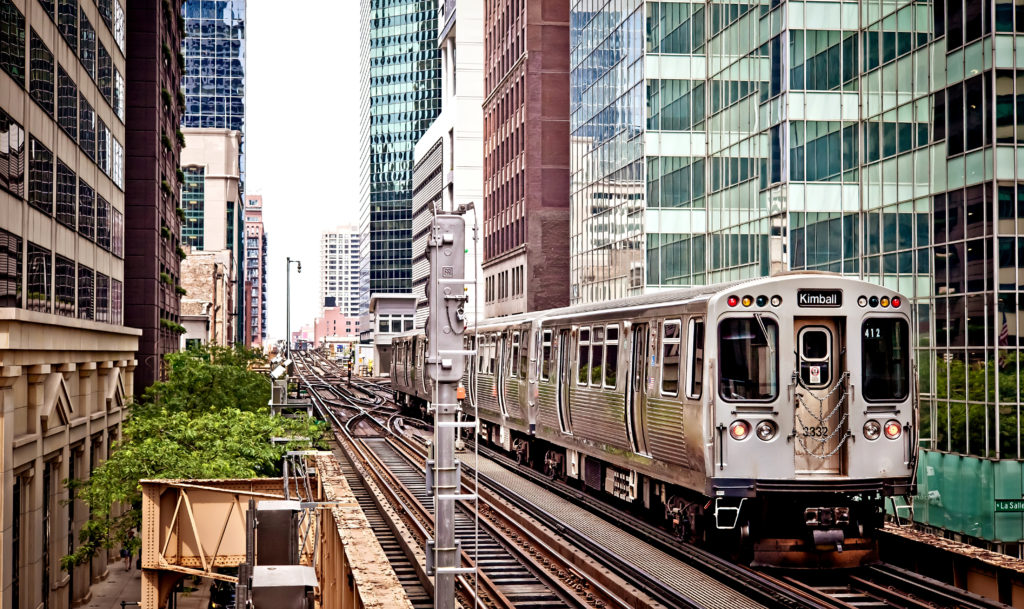
On June 28, 2019, Governor J.B Pritzker signed a $45 billion capital plan, known as the Rebuild Illinois plan, into law. The plan will be used to fund several different projects, including work on roads, bridges, and Illinois transportation over the next six years. In fact, transportation will be receiving the most funding, with an estimate of $28.6 billion to be spent on expected projects to fix Illinois’ infrastructure. According to an article in Crain’s Chicago Business written by Greg Hinz, the estimated breakdown of the $28.6 billion is currently set at “$23 billion for roads and bridges, $3.4 billion for mass transit, $442 million for the Create freight rail decongestion plan and another billion for other railroad and aviation projects.”
As part of a way to pay for the funding needed for these projects, the state had doubled the motor fuel tax from 19 cents to 38 cents a gallon for both gasoline and diesel fuel starting July 1, annually bringing in an additional $560 million for the state and $90 million for local government. This tax has been met with mixed reaction, with some, such as the trucking industry, celebrating the tax in hopes it will help improve road safety (as mentioned in a previous blog), while others who favor being fiscally conservative have criticized the move. Additionally, ride-hailing trips will be placed with a new levy of $1 a ride, which is projected to generate $214 million a year. According to briefing papers released by Pritzker’s team and quoted in this article, ““Rebuild Illinois will put the state on a path toward repair and recovery to ensure Illinois continues to be an economic leader in the state,” the paper says, contending that the project will create 540,000 direct and indirect jobs. “Since 2013, 13 states have raised or reformed their motor fuel tax,” it adds, with neighboring Michigan, Minnesota and Wisconsin leading the parade but Illinois having “one of the lowest motor fuel taxes in the country.””
Projects Specific to Chicago
Locally, projects that will receive parts of the fund that will most likely affect Chicago as soon as they start to take place are “the rebuilding of 16 miles of I-80 from Ridge Road to Lincoln Highway and related work for $1.01 billion; $2.87 billion in Regional Transportation Authority work, split mostly between Metra and the Chicago Transit Authority, and $277 million to begin passenger rail service from Chicago to the Quad Cities.” As part of it, the CTA stated that it will most likely use the funding allotted to rebuild tracks, stations and cars, with the Green Line and Blue Line specifically highlighted for repairs and improvement. Other projects specific to Chicago are the reconstruction of Kennedy Expressway, including adding lanes on the connector road from I-90 to O’Hare Airport. Approximately $92 million has also been set to rebuild the intersection at Stony Island Avenue and South Chicago Avenue, which Time Magazine considered the most dangerous intersection in Illinois after collecting data measuring traffic accidents that involved automobiles and pedestrians collected from the National Traffic Safety Administration spanning over 10 years. Major bridge improvements are also set for under the Old Post Office at 433 W. Van Buren Street.
Additional Areas of Transportation
Below is a list further breaking down which areas the funding for transportation will most likely be spent according to an article in Mass Transit Magazine:
- New roads and bridges
- Illinois Department of Transportation’s Multi-Year Plan for roads and bridges
- Mass transit, including the Regional Transportation Authority (CTA, Metra and Pace)
- Passenger rail, including Amtrak and other inter-city rail projects
- Aeronautics
- Chicago Region Environmental and Transportation Efficiency Program (CREATE)
- Grade crossing protection
- Ports
- Other transportation projects
The list does not fully lay out all the transportation projects that will be covered by this funding but it helps give a clearer picture of where the money will go.
With Rebuild Illinois having just recently been signed into law, it will be interesting to see how the projects develop once they have been given the green light.
Reader Interactions